- Durable metal cabinet (green) designed for versatile emergency storage
- Supplied with 5 interchangeable door stickers: Defibrillator, First Aid, AED, Emergency Eye Wash, and Fire Safety
- Keeps AED units or first aid kits visible, secure, and easily accessible
- Suitable for our Schiller FRED PA-1 Automatic AEDs
- Two internal shelves provide additional storage space
- Dimensions: 31cm x 15cm x 47cm
Multi-Purpose Wall Cabinet with Keyed Thumb Lock (AEDs & First Aid Kits)
 Get it for less with our volume discounts
Get it for less with our volume discountsTo support clear identification, the cabinet includes five interchangeable door stickers, allowing you to label it based on its contents. A viewing window in the door provides quick visual access to what’s inside, ensuring compliance with the Health and Safety (First-Aid) Regulations 1981, which state that first aid supplies must be “suitably marked and easily accessible.”
Designed for wall mounting, this cabinet is ideal for use in public spaces, schools, offices, and industrial settings. It features a keyed thumb lock for security and comes with two keys to prevent unauthorised access or tampering. However, in line with legal requirements, designated personnel must always have access to a key in case of emergency.
This wall mounted defibrillator cabinet is suitable for use with:
To mount this empty wall cabinet, standard wall screws are required (not included). Once securely fixed, the durable metal construction ensures the cabinet remains firmly in place, providing a stable and long-lasting storage solution for first aid supplies.
Dimensions: 31cm x 15cm x 47cm
The cabinet come with 2 keys and two removable shelves. Wall screws not included.
Frequently Asked Questions
What is an AED cabinet?
An AED cabinet is used to store a defibrillator and protect it from the elements, theft and misuse.
Do AED cabinets need power?
Most AED cabinets do not require a power supply, especially basic models designed for indoor use. However, some cabinets may include features such as alarms, internal lighting, or heating elements for outdoor or cold environments, which do require electricity. In certain cases, power may also be needed to support remote monitoring systems that track the AED's status or usage. These added features are more common in public, outdoor, or high-security locations.
Should AED cabinets be locked?
Ideally AEDs should be easily accessible for use, but not for theft. Most AEDs for private use will not be locked, however cabinets for public access defibrillators will require a code from emergency services to unlock the cabinet to prevent theft and misuse.
How high should you mount an AED cabinet?
An AED should be accessible to everyone, including those who may struggle to reach it if the cabinet was mounted too high. So, an AED cabinet should be located in an easily visible and accessible location, 48 inches above the floor.
Where should AED cabinets be placed?
HSE guidelines advise that AEDs should be kept in clearly visible and easily accessible locations so that everyone can access them in an emergency situation.
Do AED cabinets need to be alarmed?
AED cabinets are available either alarmed or not alarmed. Having an alarmed cabinet is not a legal requirement in the UK, however it is strongly recommended as it deters theft, particularly in high traffic areas.
Why is my AED cabinet bleeping?
Your AED cabinet could be beeping for several reasons. Firstly, it could be that the alarm has been activated by someone removing the AED, otherwise it is likely a warning of some kind. Warnings are generally for cabinets that have electronics, such as a heating system and the beeping is to warn you that there is a fault or the heating is irregular.
Similarly, it could be the AED itself alerting you to the need to replace the pads that are attached as they have expired. This is only if you have an AED with a maintenance monitoring system.
Do AEDs need to be in a cabinet?
AEDs don’t technically need to be stored in a cabinet. However, cabinets help to ensure the defibrillators are stored safely and visibly at all times, allowing them to be hung on the wall so that they are accessible in emergency situations.
Some cabinets while protecting the AED from the elements also have the added feature of temperature control which is ideal should it be snowing or in the middle of a heatwave.
Where do you put an AED cabinet?
An AED cabinet should be mounted 48 inches up on a wall where it is clearly visible and easily accessible to all.
What are the requirements for AED signage?
The UK requirements for AED signage are that:
How do I choose a medicine cabinet?
Firstly, it will depend on what you are using it for and the general requirements that will come as a result of the purpose of your medicine cabinet. Secondly, it will depend on the size of the area you are planning on storing your cabinet in as the different types of cabinets will come in different shapes and sizes.
Should first aid cabinets be locked?
There are reasons that cabinets should be locked, but also why they shouldn’t. Ultimately it depends on how likely it is that your first aid supplies will be stolen compared to how easily accessible you would like the supplies to be.
How often should first aid kits be checked?
Generally, first aid kits should be checked every three years as the usual lifespan for a first aid kit is between three and five years.
Where is the best place to store first aid?
Primarily first aid kits should be stored in an easily accessible location. For most workplaces the best place to store a first aid kit is in a central location, such as the entrance hall, or an area of high risk, like a factory floor. At home, the best place is likely to be the kitchen or a cupboard in the hall.
What is a first aid medicine cabinet?
A first aid medicine cabinet is a secure storage solution for first aid supplies, typically either wall-mounted or free standing. It allows for medication, first aid supplies, or both to be stored in an organised and accessible way.
Related Blog posts:
Returns Policy
Where goods have been delivered to The Customer in accordance with an order placed by them, but are subsequently not required, The Customer is required to restore them to The Company at The Customer's cost and to take reasonable care of those goods in the meantime.
All items being returned by The Customer must be in their original condition and packaging within 30 days of receiving the goods. If these conditions are met, firstaid.co.uk will issue a full refund for the goods, or exchange items where required.
firstaid.co.uk will only refund the delivery charge if the return is as a result of our error, or as a result of a genuine fault with an item but instructions in these instances should be sought from the sales office first. In the case of faulty goods, faults can only be determined upon return of your item and at the discretion of firstaid.co.uk. firstaid.co.uk are not be responsible for the loss of your items when returning them to us, however we do request that you return items via 1st class recorded post, to help you to track and trace the whereabouts of your parcel and cover yourself for any loss should it occur.
Returning an Item
firstaid.co.uk offer a 30 day refund or exchange policy on all items purchased, providing they meet the conditions set out in our returns policy. If you are returning an item with a genuine fault please contact the office first with details of the fault and request instructions for returning it to us at our cost. If a faulty item is returned to us without prior notification, please be advised we cannot refund your postage costs.How do I return an item?
In the first instance, please email us at sales@firstaid.co.uk detailing your reason for the return. Our Customer Services team will then generate a returns number for you to add to all parcels to be returned. This ensures any returns are dealt with as efficiently as possible. Where possible, please send items back to us using the packaging provided with your order and ensure this is taped securely. Unless we agree to arrange collection directly, please send your returns via first class recorded delivery to:
Returns Department
Safety First Aid Group Limited
Avenue One
Letchworth Garden City
Hertfordshire
SG6 2WW
When will I receive my Refund or Exchange?
When we receive a returned item, our returns department will first ensure that it meets the conditions set out in our returns policy. Once this is checked we will process your request as stated on the returns form you filled in when sending back your item. Exchanges will be processed and dispatched immediately, unless there are any unforeseen problems with your returned item, which may include the goods, the return information provided or if the items you require are out of stock.
Refunds will be completed as soon as possible, and these usually clear within 7 days of us receiving your returned goods. Refunds are also issued according to the way you originally purchased your items and only processed after we receive your goods and the relevant checks have been made. Therefore a guaranteed time scale for refunds or exchanges cannot be specified.
All goods quoted for delivery shall be delivered to the address instructed by the Customer. We would always endeavour to send items together, however based on stock availability, items may sometimes be sent in separate packages to ensure delivery is as quick as possible. The cost of goods delivered will be charged to the Customer as defined on the web site. Although guidelines have been provided, specific times and dates for delivery cannot be guaranteed. The Company shall not be liable for any loss whatsoever caused by non-delivery or delay in delivery. firstaid.co.uk require a 14 working days waiting period before being able to trace, replace or refund lost items.
Dispatching your Goods:
Firstaid.co.uk opening hours are between 8.30am and 5.00pm Monday to Friday, and our sales team will be happy to deal with any queries you might have during these times.
Delivery Methods & Times:
Firstaid.co.uk use various delivery methods, dependent upon the weight of the parcel. These methods include Royal Mail and Courier delivery services. Standard delivery usually takes 2-3 working days from date of posting, but may take longer if circumstances beyond our control disrupt postal services. Firstaid.co.uk cannot process claims for loss of goods until 14 working days (3 weeks) have passed. If the standard tracked (no signature) or recorded service has been used and the item is stated as delivered we may not be able to replace goods unless a full investigation shows the items have been stolen in transit or on delivery, a crime number may be required.
Delivery Charges:
The standard delivery charge is £5.95 for orders under £50 (excluding VAT) or free on orders over £50 (excluding VAT) UK mainland only, excluding Scottish Highlands.
Delivery charges for non-UK mainland and Scottish Highland addresses are detailed below. Delivery charges are subject to change. Firstaid.co.uk reserve the right to change delivery charges without prior notice.
For international delivery please contact our Customer Services Team.
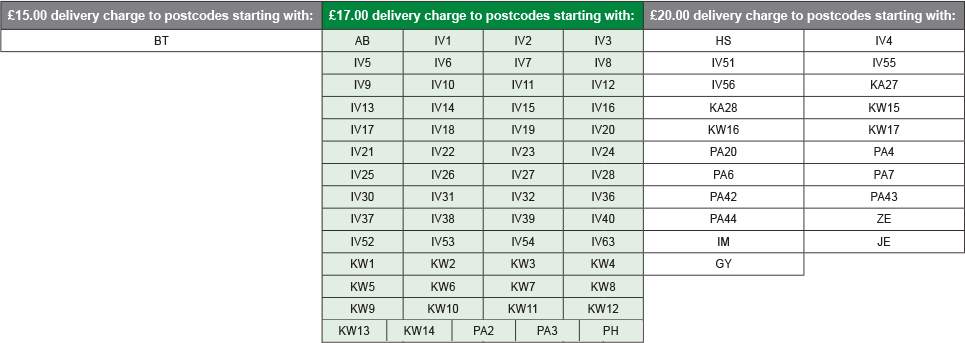
Aerosols:
Please note that Royal Mail classes aerosols as a prohibited
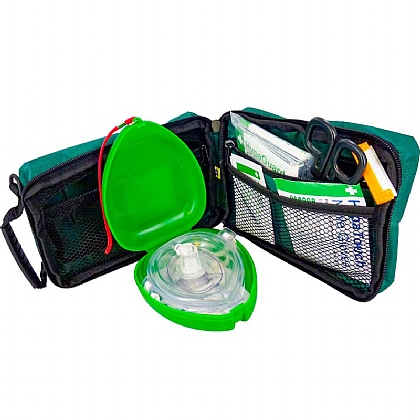
 AED Responder Kit
£13.25 (Ex VAT)
AED Responder Kit
£13.25 (Ex VAT)
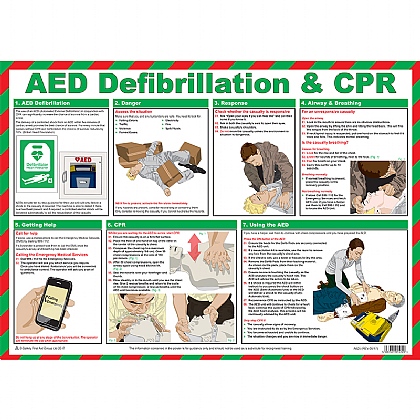
 AED Defibrillation & CPR First Aid Poster (A2, Laminated)
£15.25 (Ex VAT)
AED Defibrillation & CPR First Aid Poster (A2, Laminated)
£15.25 (Ex VAT)
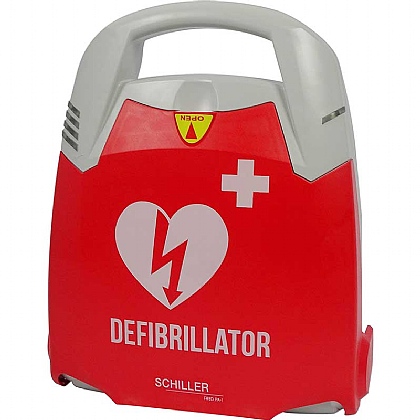
 Schiller FRED PA-1 Automatic AED (with 10 Year Warranty)
£902.70 (Ex VAT)
Schiller FRED PA-1 Automatic AED (with 10 Year Warranty)
£902.70 (Ex VAT)
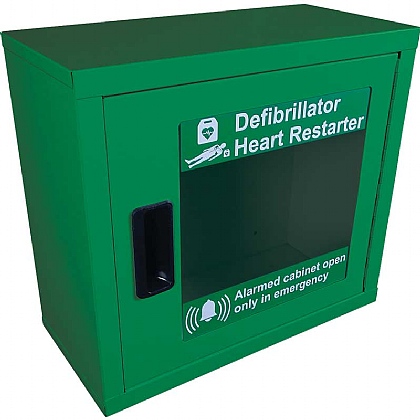
 Universal Indoor Defibrillator AED Cabinet with Alarm
£137.70 (Ex VAT)
Universal Indoor Defibrillator AED Cabinet with Alarm
£137.70 (Ex VAT)
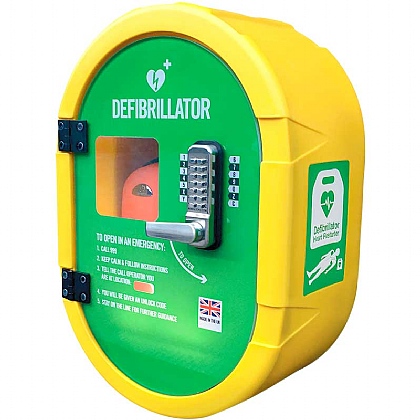
 DefibSafe Outdoor Defib Cabinet with Keypad Lock
£509 (Ex VAT)
DefibSafe Outdoor Defib Cabinet with Keypad Lock
£509 (Ex VAT)


